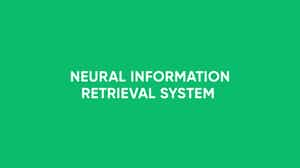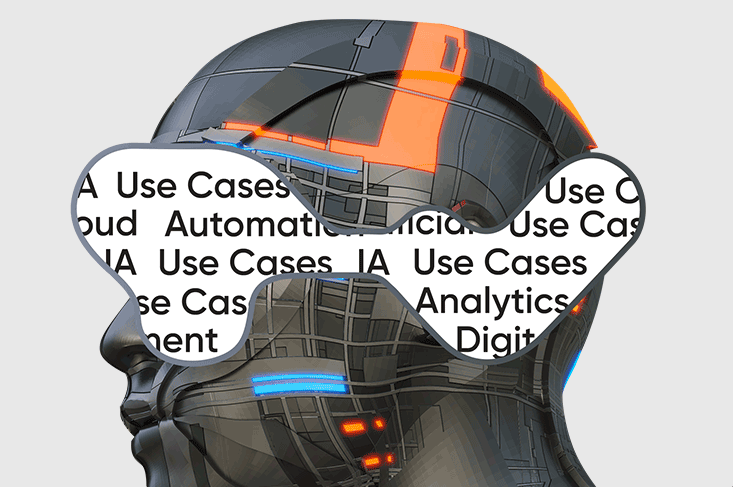
TruAI - ARTIFICIAL INTELLIGENCE & COGNITIVE SCIENCE
Technology for intelligent businesses
EXTRACT ACTIONABLE INTELLIGENCE FROM DATA
Discover intelligent patterns, improve process efficiency and enhance customer satisfaction with TruAI.
TruAI is a comprehensive artificial intelligence and cognitive sciences solution that helps mine data and text to infer patterns in highly complex and high volume data. The AI makes sense of data from various sources that could be in the form of text or images. These inputs have a far-reaching impact on businesses with a wide range of applications from face detection to behavior prediction to fraud prevention.
Artificial intelligence and machine learning (AI/ML) solutions can use both structured and unstructured data to predict events, raise alerts, or decipher patterns which are useful to businesses. For instance, the insights provided by AI can help more efficient processes, boost productivity and minimize costs.
TruAI has been applied across industries, including banking and financial services, healthcare, insurance, market research, retail, manufacturing, logistics, credit rating agencies and multinational organizations, and credit rating agencies.
Key Differentiators
 INFORMATION MINING
Speedy data mining with higher precision compared to keyword based or fuzzy searches. Multi-lingual text mining and rule based mining
INFORMATION MINING
Speedy data mining with higher precision compared to keyword based or fuzzy searches. Multi-lingual text mining and rule based mining
 QUERYING
Data aggregation and query platform to collect, validate, analyze data, and make decisions in near real-time
QUERYING
Data aggregation and query platform to collect, validate, analyze data, and make decisions in near real-time
 TRACEABLE PATTERN GENERATION
Use of natural language processing, advanced text and data analytics and stream analytics, to detect patterns with high accuracy and relevance
TRACEABLE PATTERN GENERATION
Use of natural language processing, advanced text and data analytics and stream analytics, to detect patterns with high accuracy and relevance
 ALERT GENERATION
Alerts to highlight items that need quick attention and action
ALERT GENERATION
Alerts to highlight items that need quick attention and action
 CLASSIFICATION AND GROUPING
Text classification and clustering for seamless grouping of elements and records
CLASSIFICATION AND GROUPING
Text classification and clustering for seamless grouping of elements and records
 DOCUMENT HIGHLIGHTS GENERATION
Document summaries to extract key points before further processing or archiving
DOCUMENT HIGHLIGHTS GENERATION
Document summaries to extract key points before further processing or archiving
 DATA EXTRACTION
Information extraction for mining entity, event, topic models, key phrases, document scrutiny, etc.
DATA EXTRACTION
Information extraction for mining entity, event, topic models, key phrases, document scrutiny, etc.
 PATTERN MINING
Associations and relationships to uncover deepest patterns, rings, similar behaviours or implicit groups while projecting likelihood of events
PATTERN MINING
Associations and relationships to uncover deepest patterns, rings, similar behaviours or implicit groups while projecting likelihood of events
 DATA INDEXING
Real-time search and indexing engine for building a seamless archival-retrieval system
DATA INDEXING
Real-time search and indexing engine for building a seamless archival-retrieval system
TruAI Modules

- Document classification
- Document clustering
- Topic modelling
- Accurate summarization
- Cognitive capture
- Named Entity Recognition (NER)
- Co-Reference in long texts
- Underlying sentiment analysis in unstructured text
- Emotion analysis
- Word embedding for semantic and contextual searches

- Pattern recognition
- Association extraction
- Co-relation of data points
- Prediction of behavior and events
- Dynamic recommendation engines
- Face detection
- Face match
- Face search
- Live face (selfie)
- Object classification
- Object detection

Read the white paper about how IA is a direct function of People-Process-Technology integration and why it is an essential aspect while envisaging expansion in dynamic business environments.
Download Now →

The client wanted to decide on competitive pricing for all their products and get smart insights into future trends with respect to competitor pricing.
Download Now →

The demo shows how the application powered by Datamatics TruAI (Artificial Intelligence engine) extracts relevant, key information from any type of document. This auto-summarization can be strategically used in different places, right from metadata to executive summaries.
Watch Now →
Frequently Asked Questions
We want to simplify your life. In the following you see answers to some questions that might arise.
AI joins the dots from disparate data sources and discovers interesting patterns that humans can miss. Consistent variations, clustering of data points, and dependencies can highlight interesting stories from static data resources. Using data, AI-enabled information mining generates and verifies hypotheses, and deduces information. Information mining forms the basis of predictive analytics and machine learning.
AI-powered data mining enables users to perform different levels of tasks:
Anomaly detection, where unusual patterns or outliers are thrown up, which may require deeper investigation
Associations, where the relationship between two or more variables is established and is frequently used in forensic investigations
Clustering, where data points that are similar in more than one way are discovered
Classification, where known structures are generalized in order to apply to new data points, such as for records or file classification
Regression, where a function is found, which models the data and estimates the relationship between different data points
Summarization, where a concise summary is generated based on weighted keywords. It is popularly used for generating audit reports and executive summaries.
Artificial intelligence solutions simplify document management to a large extent. These solutions enable automatic file classification or categorization as well as summarization. The files may include spreadsheets, documents, emails, PDFs, video files, audio files, social media, news, and other data types.
AI algorithms generate intelligence from high data volumes by correlating disparate data points. This data may comprise structured, unstructured, and multi-structured data.
Additionally, AI-enabled topic modeling allows the screening of large data sets, such as reviews, emails, social media snippets, etc., and segregates them as per the predominant sentiment.
AI algorithms use weighted keywords and correlate them to generate concise summaries of lengthy documents, news articles, research papers, agreements, books, tweets, etc.
An AI algorithm can use one of two methods, either extractive and abstractive. Extractive summarization extracts several portions of the text and stacks them to create a summary. Abstractive summarization uses NLP algorithms and generates a new summary.
AI-powered document summarization is used in audits, research study scenarios, social media listening, and government services.



